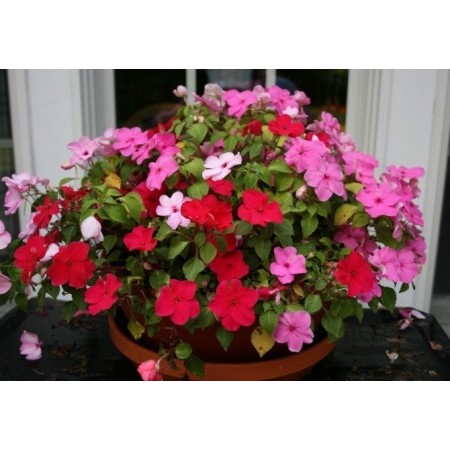Growing Balsam

Balsam is a very common inhabitant of modern apartments and private houses of all those who like to grow ornamental plants indoors. This flower is not too whimsical to care for, at the same time, it is able to please residents with plentiful round-the-clock flowering and the presence of a large number of buds of different colors. In the presented material we will try to figure out what conditions must be observed in order for this representative of the flora to grow and multiply unhindered.
Choosing the right place in the house
For balsam, an optimal location would be a well-lit place where there is an abundance of scattered ultraviolet light. The flower feels great on the southern windows of the house, while it is recommended not to allow direct sunlight to fall on it. Buds and leaves of balsam are very susceptible to light, and burns can form on them, which are very difficult to get rid of. Additional protection can be provided with curtains and curtains, which can be removed with the onset of winter cold.
Drafts for balsam are not dangerous (in the summer), so the room with the plant should be regularly ventilated. In summer, the flowerpot is allowed to be placed on open balconies, but in winter it is best to protect the pot with the pet from sudden temperature changes, providing it with additional light sources.
How often to water
Balsam is very fond of plentiful watering, so it is popularly called the “wet Vanka”. It is recommended to moisten the soil with moisture at least twice a day, but it is also not necessary to allow the root system to flood. The roots can rot if there is an excess of water in the pot, so, to prevent problems, it is recommended to provide a drainage layer of expanded clay in the container.
In winter, water procedures are minimized, as balsam falls into a dormant state and builds strength before the next flowering period. Then you need to moisten the soil no more than once a day, tracking the time when the earthen lump begins to dry out.
Humidity and temperature
The birthplace of balsam is North America and Southern Europe, so in terms of temperature we will have to maintain the thermometer at at least 20-22 degrees Celsius. This applies to spring and summer, in winter, to ensure comfortable conditions for the rest period, the air temperature should not fall below 16 degrees.
When heat reigns outside the window, the amount of balsamic fluid consumed increases. Accordingly, the humidity in the room should be at a high level. You can achieve the desired result with the help of improvised means - moisten the leaves of the plant from the spray gun and install additional containers with liquid next to the pot.